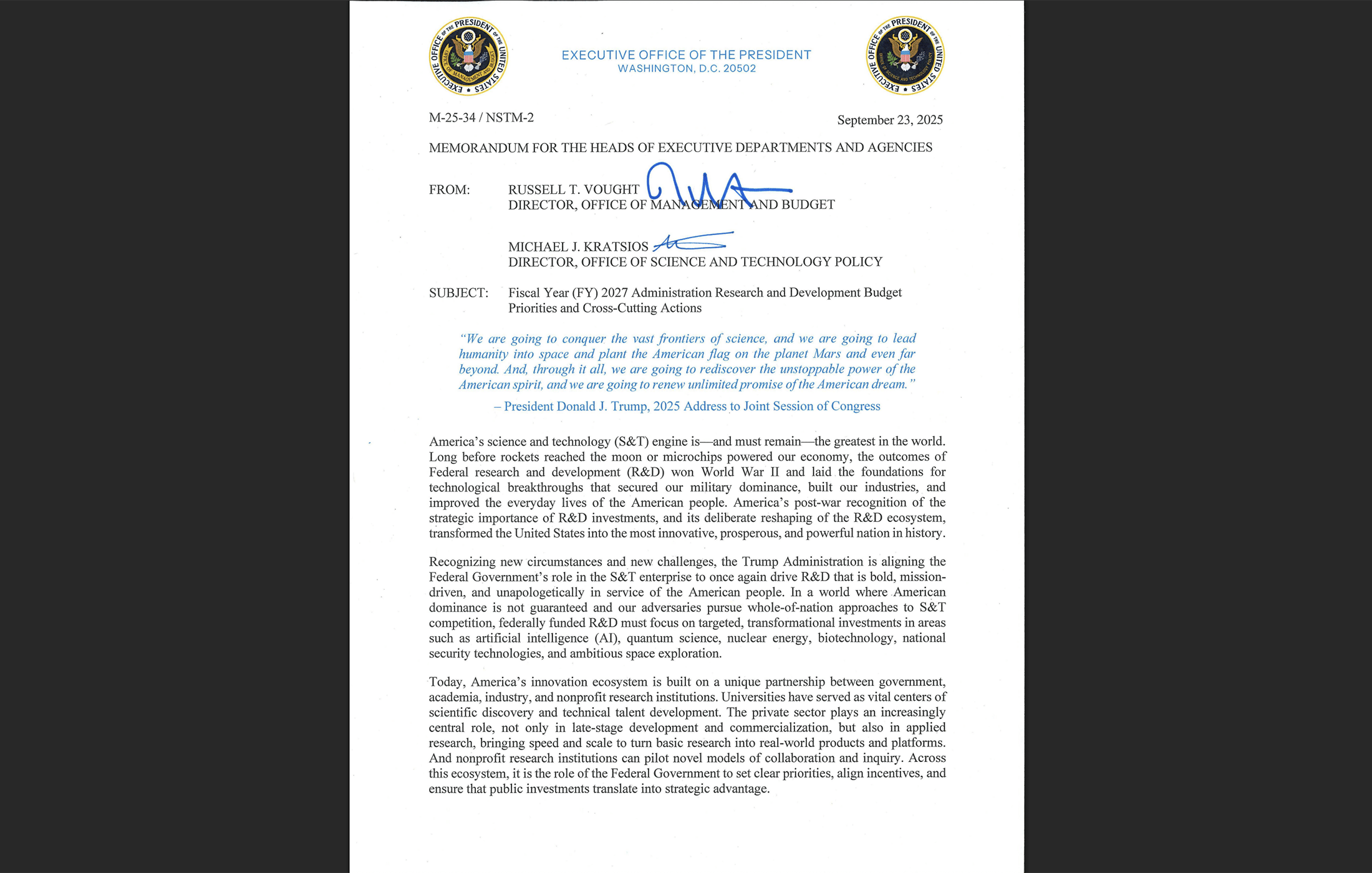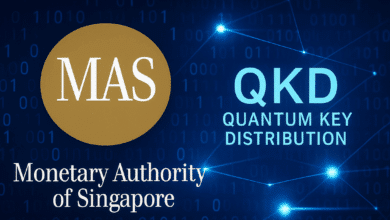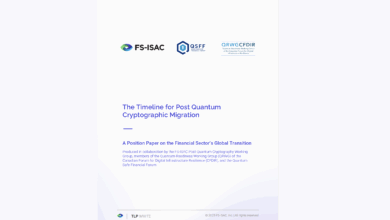White House FY2027 R&D Memo Puts Quantum Technologies Front and Center

Table of Contents
23 September 2025 – The Executive Office of the President (Office of Management and Budget and Office of Science and Technology Policy) issued a memorandum (M-25-34, NSTM-2) outlining the Administration’s Research and Development Budget Priorities for Fiscal Year 2027.
This annual memo guides Federal agencies as they plan R&D investments for the upcoming budget cycle. The FY2027 memo realigns U.S. research efforts toward a core mission: drive economic growth, improve quality of life, and ensure American leadership in critical technology sectors. It emphasizes “critical and emerging technologies” – notably placing quantum science and artificial intelligence (AI) at the top of the agenda.
In tandem with these frontier areas, the memo ties R&D priorities to national goals in energy, security, health, and space, reflecting a broad strategy to leverage science for both innovation and strategic advantage.
National R&D Priorities at a Glance
The FY2027 memorandum identifies five overarching R&D priority areas, each linked to America’s prosperity and security:
- Unrivaled American Leadership in Critical & Emerging Technologies – Maintaining dominance in cutting-edge fields like AI and quantum information science, alongside key enablers such as semiconductors, advanced networks (5G/6G), future computing paradigms, and advanced manufacturing. (This is the umbrella under which quantum technologies feature prominently.)
- American Energy Dominance & New Frontiers – Securing affordable, reliable energy (including fossil, nuclear fission/fusion, geothermal, hydropower) and exploring polar regions, oceans, and other frontier environments.
- Strengthening American Security and Resilience – Advancing defense capabilities (e.g. hypersonics, autonomous systems) and homeland security (e.g. the “Golden Dome” missile defense initiative), bolstering cybersecurity and critical infrastructure resilience.
- Health and Biotech Leadership – Prioritizing biomedical innovation and biosecurity, from combating diseases (Alzheimer’s, obesity, etc.) to expanding domestic biomanufacturing and biosafety for pandemic readiness.
- Assured Space Dominance – Investing in space exploration (Moon/Mars missions) and breakthrough space technologies (novel sensors, nuclear propulsion, space habitats), to sustain U.S. leadership in orbit and beyond.
Complementing these, the memo outlines cross-cutting actions to strengthen the research ecosystem – for example, expanding the STEM workforce pipeline, building shared research infrastructure, fostering public-private partnerships, and safeguarding R&D from foreign exploitation. Together, the priorities and cross-cutting measures aim to “revitalize America’s S&T enterprise” and translate R&D investments into tangible economic and strategic benefits.
Quantum Technologies as a Pillar of U.S. Innovation
Among the critical technologies highlighted, quantum information science and technology (QIS) stands out as a core pillar of the Administration’s R&D strategy. The memo frames quantum technology as essential to securing America’s future tech leadership: “As quantum technologies mature and become increasingly available on the commercial market, bolstering U.S. leadership will require advancing fundamental science while also tackling emerging engineering challenges and strengthening the critical technologies enabling the quantum ecosystem,” the document states. In other words, Washington recognizes that quantum computing and related fields are moving from lab research toward real-world deployment, and it intends to speed that transition with coordinated federal investment.
Balanced Approach: A key theme is balancing basic research with applied development in quantum. The memo directs agencies to double down on fundamental R&D (ensuring continued discovery in quantum physics, information science, and algorithms) and to push forward engineering and practical implementation. The goal is twofold: keep expanding the frontiers of quantum science, and make sure the breakthroughs can translate into useful technologies, products, and infrastructure that benefit end-users and the economy.
Quantum-Focused Directives for Federal Agencies: To make this vision concrete, the FY2027 guidance spells out specific calls to action for agency programs in quantum R&D. These include:
- Deepen Foundational Research – Establish or expand focused efforts (centers of excellence, core research programs) to advance basic quantum information science. The administration wants robust support for the underlying science of quantum computing, communication, and sensing at universities and national labs.
- Accelerate Quantum Applications – Prioritize R&D that explores end-user applications of quantum technologies and helps mature enabling hardware and software. The memo urges work on real-world use cases so that as quantum devices improve, they can be readily applied in areas like precision sensing, secure communications, and advanced computing.
- Build the Quantum Ecosystem – Support pre-competitive R&D consortia and public-private partnerships that bring together government, industry, and academia. Such consortia can accelerate technology transfer and standards. Likewise, agencies are encouraged to invest in critical infrastructure and testbeds – shared quantum labs, user facilities, and network testbeds – to provide researchers and companies access to cutting-edge quantum experimentation platforms.
- Enable Next-Gen Quantum Devices – Invest in advanced manufacturing capabilities for quantum tech. This includes developing the fabrication processes, metrology, and automation needed to produce state-of-the-art quantum devices (like qubit chips, cryogenic systems, quantum sensors) at scale. The memo specifically notes that pursuing “next-generation quantum devices” will require breakthroughs in manufacturing techniques and tooling.
- Support Enabling Sciences – Increase funding for enabling technologies and materials that underlie quantum platforms. For example, research in semiconductors, novel materials, and advanced photonics, as well as in the mathematical and physical sciences, is highlighted as crucial support for quantum R&D. By prioritizing materials science and precision engineering, the government aims to remove bottlenecks in qubit quality, error rates, and system scalability.
By following these directives, agencies will help cultivate a robust quantum innovation ecosystem – from fundamental theory and qubit science, through engineering prototypes, all the way to pilot programs and early commercialization. The clear message is that quantum technology is no longer a niche curiosity; it is a strategic national asset in-the-making, and the U.S. intends to nurture it from lab to market.
Integrating Quantum with AI, Security, and Industry
Another notable aspect of the FY2027 R&D priorities is how quantum initiatives are interlinked with other major focus areas. The memo does not treat quantum in isolation, but rather as part of a connected tech landscape, with mutual dependencies and opportunities across domains:
- Synergy with AI: Artificial intelligence and quantum technology are presented as twin priorities – and mutually reinforcing ones. In fact, the memorandum explicitly calls out using AI as a tool to advance quantum science, highlighting “applied uses such as using AI to accelerate scientific discovery … [and] support quantum science”. This points to AI-assisted quantum research (for instance, using machine learning to optimize quantum algorithms or control quantum hardware) as a growth area. Conversely, continued progress in quantum computing could eventually boost AI, creating a virtuous cycle. By linking AI and quantum at the top of the agenda, the administration signals that it sees these two fields driving and enabling each other in the coming years.
- Semiconductors and Microelectronics: The memo underscores that breakthroughs in microelectronics are vital for quantum (and AI) advancements. Building quantum computers and sensors at scale will depend on cutting-edge chips, components, and manufacturing processes. To that end, agencies are urged to work with industry and academia on next-generation semiconductor R&D, ensuring a secure supply of the specialized electronics that quantum systems require. “Federal investments in semiconductor and microelectronics R&D are critical to enabling the development and deployment of AI and quantum applications,” the document states, emphasizing initiatives to develop new fabrication and characterization tools for emerging chip technologies. This aligns with a broader push for domestic semiconductor capacity (e.g. following the CHIPS Act) and acknowledges that quantum tech will benefit from — and contribute to — progress in nanofabrication, superconducting circuits, cryoelectronics, and other microelectronic innovations.
- Advanced Materials & Manufacturing: Hand-in-hand with microelectronics, the policy highlights advanced materials R&D and manufacturing techniques as enablers for quantum platforms. It calls for shortening the timeline from materials discovery to deployment, leveraging approaches like AI-driven materials design, additive manufacturing, and automation. In practice, this could mean discovering novel qubit materials (for example, stable silicon spin defects or new superconductors) and rapidly integrating them into prototype devices. It also means refining manufacturing processes (such as lithography or cryogenic packaging) so that quantum prototypes can evolve into reliable, reproducible products. By investing in these cross-cutting capabilities, the U.S. aims to overcome the engineering hurdles that currently limit quantum scalability.
- Post-Quantum Cryptography and Security: Notably, the memo addresses the cybersecurity implications of quantum computing. As quantum machines grow more powerful, they could eventually crack traditional encryption, potentially jeopardizing critical infrastructure and data security. To preempt this threat, the administration mandates that the Nation “prepare[] with post-quantum cryptography to defend against future threats.” In other words, federal agencies are instructed to begin adopting and testing post-quantum cryptography (PQC) – new cryptographic algorithms resistant to quantum attacks – to safeguard sensitive systems and communications. This push for PQC deployment is a timely complement to quantum R&D: while scientists build quantum computers, government must also upgrade encryption to stay ahead of adversaries’ quantum capabilities. The memo ties this into a larger resilience agenda (protecting critical infrastructure, supply chains, and networks), positioning quantum both as an opportunity and a security challenge that must be managed with urgency.
Overall, the FY2027 R&D priorities take a holistic view: quantum technology is threaded throughout initiatives in computing, industry, and security. For example, quantum science is mentioned in the context of applied AI for scientific discovery, in calls to strengthen secure communications networks, and even indirectly in space and energy (where advanced sensors and materials, some leveraging quantum effects, will be important). This integrated approach reflects an understanding that leadership in quantum will rely on progress across multiple sectors – from the talent pipeline and infrastructure to related tech domains like AI and microelectronics.
Outlook – A Quantum Leap in Federal Focus
The release of this memo sends a clear signal: quantum technologies are now a centerpiece of U.S. innovation policy. What was once a largely academic pursuit is increasingly seen as a strategic national priority, on par with AI and advanced military hardware. By explicitly directing agencies to ramp up quantum R&D – and to do so in concert with industry consortia, interdisciplinary centers, and initiatives in chips and cybersecurity – the Administration aims to accelerate the quantum revolution. Federal science officials want to ensure that the U.S. not only pioneers quantum breakthroughs in the lab, but also translates them into real-world impact: new industries, enhanced security, and economic growth.
In practical terms, we can expect to see agencies like NSF, DOE, NIST, DoD, and others sharpening their focus on quantum programs in their FY2027 budget requests. This may mean expanded funding for quantum computing testbeds, new public-private partnerships (for example, quantum research consortia or innovation hubs), support for training the quantum workforce, and cross-agency efforts to standardize post-quantum cryptography.
The memo’s guidance also complements ongoing legislative initiatives and previous executive actions (such as the National Quantum Initiative) by reinforcing the commitment to quantum science and aligning it with broader missions like energy independence and national security.
It’s worth noting that the memo is guidance, not law – Congress ultimately appropriates funding. However, these stated priorities are a strong indicator of where federal R&D efforts will concentrate. The elevation of quantum tech in this priority list – alongside AI, energy, and space – demonstrates a consensus at the highest levels of government that quantum computing, quantum sensing, and related technologies are critical to the next generation of American innovation and infrastructure. For the quantum community and tech industry, the FY2027 R&D memo is an encouraging sign that Washington is doubling down on quantum – investing in both the long-term science and the near-term path to commercialization.
Quantum Upside & Quantum Risk - Handled
My company - Applied Quantum - helps governments, enterprises, and investors prepare for both the upside and the risk of quantum technologies. We deliver concise board and investor briefings; demystify quantum computing, sensing, and communications; craft national and corporate strategies to capture advantage; and turn plans into delivery. We help you mitigate the cquantum risk by executing crypto‑inventory, crypto‑agility implementation, PQC migration, and broader defenses against the quantum threat. We run vendor due diligence, proof‑of‑value pilots, standards and policy alignment, workforce training, and procurement support, then oversee implementation across your organization. Contact me if you want help.



